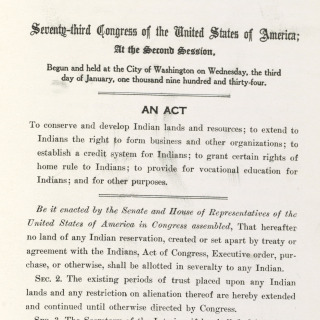The Indian New Deal 1934
The call for reforms in Federal Indian policy and the negative effects of the Great Depression on indigenous peoples led to a series of new legislation known as the “Indian New Deal.” It attempted to revitalize tribal governments, promote tribal welfare, and preserve Native American culture.
After a nearly 50-year policy of forced assimilation, however, many Native Americans had never lived a traditional, indigenous lifestyle, and some tribes resisted the change. As the American economy recovered and the United States entered World War II, the impact of the Indian New Deal waned, but it is credited with laying a critical foundation for future promotion of Native American rights and tribal sovereignty.
